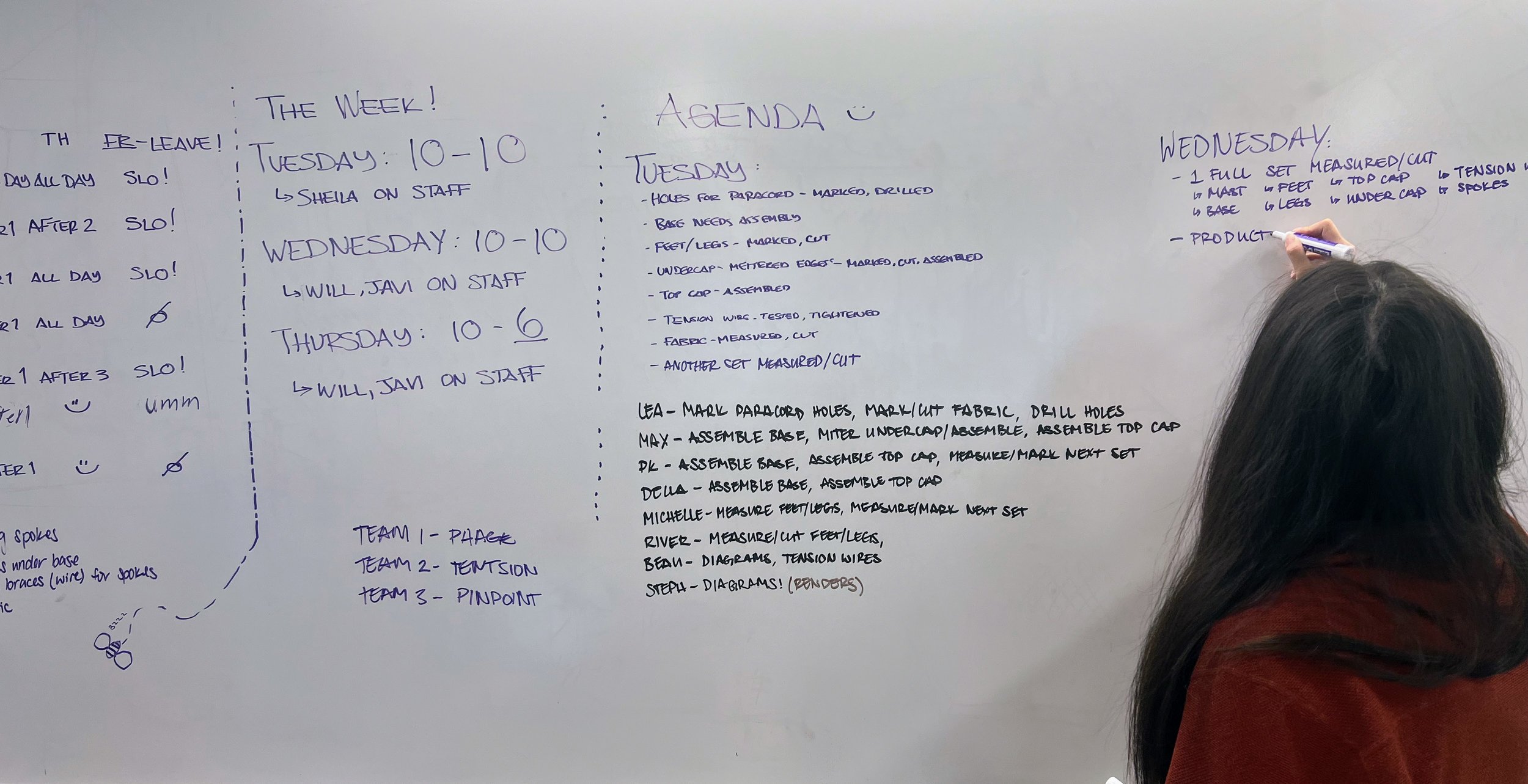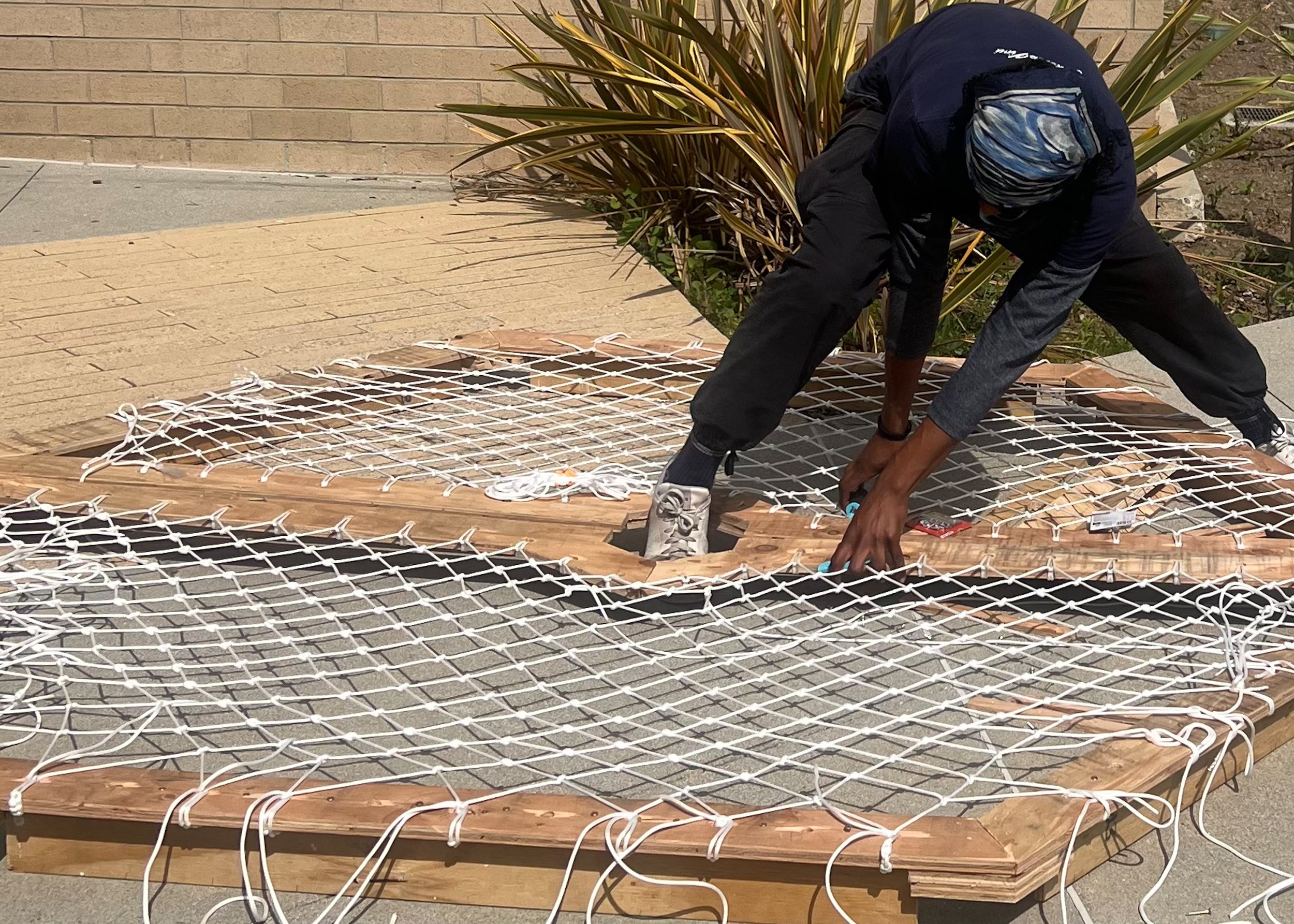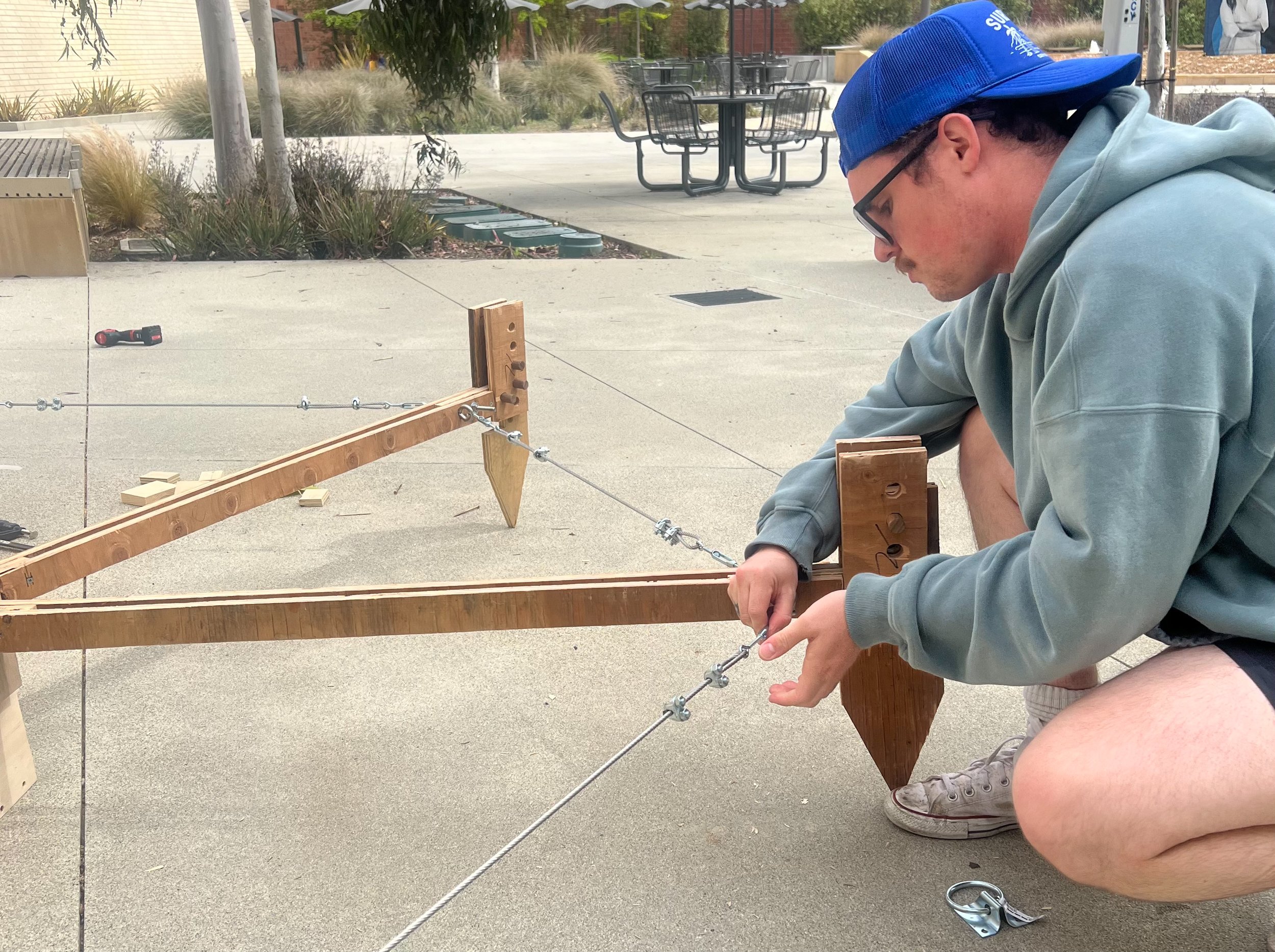SMC architecture students take top honors at Cal Poly’s Design Village Competition 2025









Santa Monica College (SMC) architecture students earned two of the top three awards at the 2025 Design Village Competition, hosted by California Polytechnic State University, San Luis Obispo’s College of Architecture and Environmental Design (CAED) from April 25–27. Competing against 90 teams from 16 California community colleges and universities, SMC won the “Best Overall” award for “Team Phage” and the “Best Theme” award for “Team Tentsion.” The “Best Theme” award tied with Mt. San Antonio College’s “Chamber of Reflection.”
This year marked SMC’s second appearance at the competition — and the first time participation was required for students enrolled in “ARC 32: Construction Materials and Methods.” Over six weeks, students developed hand drawings, 3-D models and full-scale structures. They then traveled to San Luis Obispo, hiked their materials into Poly Canyon, rebuilt their structures onsite, and spent two nights living in them.
The 2025 theme, “Nexus,” is defined by Oxford Languages as “a connection or series of connections linking two things.” The theme invited competitors to explore how their structures can act as “a center of activity or point of convergence,” according to Cal Poly’s official Design Village website. This year, three SMC teams entered the competition.
Team Phage, designed by second-year student Kyle Daou, was inspired by geometric principles. “I was inspired by the Platonic solids and their symmetry, so I used that idea to create my design, as the symmetry would maximize efficiency both in time and material,” he said.
Team Tentsion was designed by second-year student Beau Carter. The design was inspired by “the Dymaxion House by Buckminster Fuller. Tent in tension,” he said.
Team Pinpoint, designed by Jocelyn Ceja and Arya Rahmanian, focused on adaptability. The team endeavoured to create “a structure with minimal hardware that can be moved around like a LEGO piece to create different shapes within the sleeping structure,” Ceja said.
For many students, the Design Village experience went far beyond the competition itself.
“What I enjoyed most was how quickly our group — who had never met before — came together,” said Diego Bedoya, an architecture student on Team Tentsion. “We learned how to work better as a team.”
Lea Jacobson, an interior design student and another member of Team Tentsion, echoed the sentiment. “I really enjoyed the connection we made — not just with everyone in our class, but with students from other colleges as well,” she said. “As an interior design student, I don’t usually get to do hands-on projects like this. It was a great experience.”
Both students reflected on the challenges of shifting from digital design to hands-on construction.
“We spent too much time solving problems on the computer that didn’t actually exist in the real world,” said Bedoya. “Next time, I’d focus more on the actual build and solve problems as they come up.”
Jacobson agreed. “We relied too much on the digital world,” she said. “If I were to do this again, I’d definitely do more small-scale physical testing to work out problems early.”
The event’s “Nexus” theme also resonated with competitors on a personal level.
“I moved to California from Colorado without knowing anyone,” said Bedoya. “Now I have lifelong friends. This experience really brought us together.”
Jacobson reflected on the social impact of the designs themselves. “It was interesting to see how physical structures can spark connection — not just between clients and designers, but within communities,” she said.
